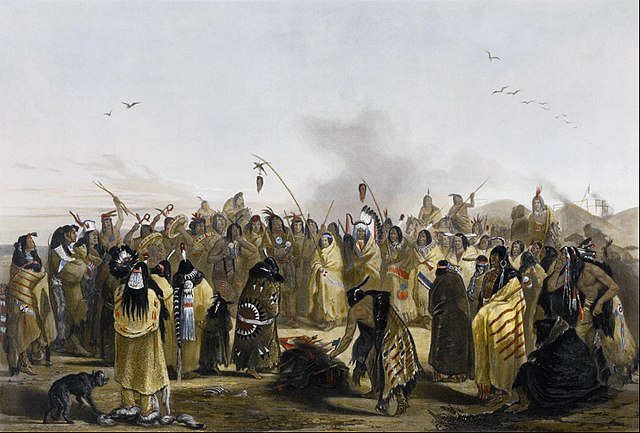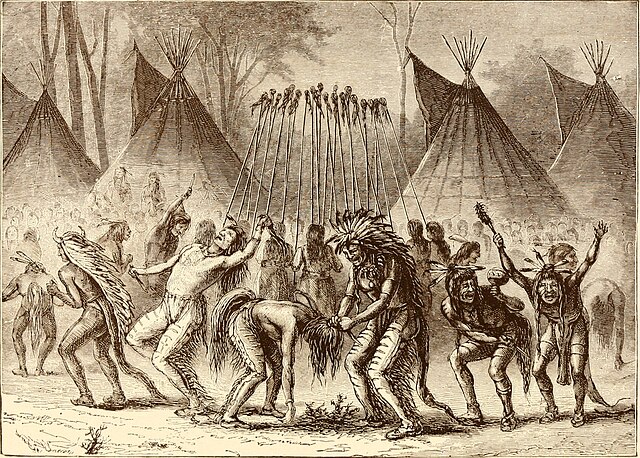Scalping is the act of cutting or tearing a part of the human scalp, with hair attached, from the head, and generally occurred in warfare with the scalp being a trophy. Scalp-taking is considered part of the broader cultural practice of the taking and display of human body parts as trophies, and may have developed as an alternative to the taking of human heads, for scalps were easier to take, transport, and preserve for subsequent display. Scalping independently developed in various cultures in both the Old and New Worlds.
Karl Bodmer's 1844 aquatint Scalp Dance of the Minitarres depicts Siouan Hidatsa people in a scalp dance.
Illustration of a scalp dance from the 1919 edition of 1884 children's book Indian History for Young Folks by Francis S. Drake
1732 illustration by Alexandre de Batz of Choctaw people of the Mississippi in war paint, bearing scalps
Knife and Sheath, probably Sioux, early 19th century, Brooklyn Museum
The practice of human trophy collecting involves the acquisition of human body parts as trophy, usually as war trophy. The intent may be to demonstrate dominance over the deceased, to humiliate or intimidate the enemy, or in some rare cases to commemorate the deceased. It can be done to prove one's body count in battle, to boast one's prowess and achievements to peers, or as a status symbol of superior masculinity. Serial killers' collection of their victims' body parts have also been described as a form of trophy-taking.
American sailor with the skull of a Japanese soldier during World War II.





